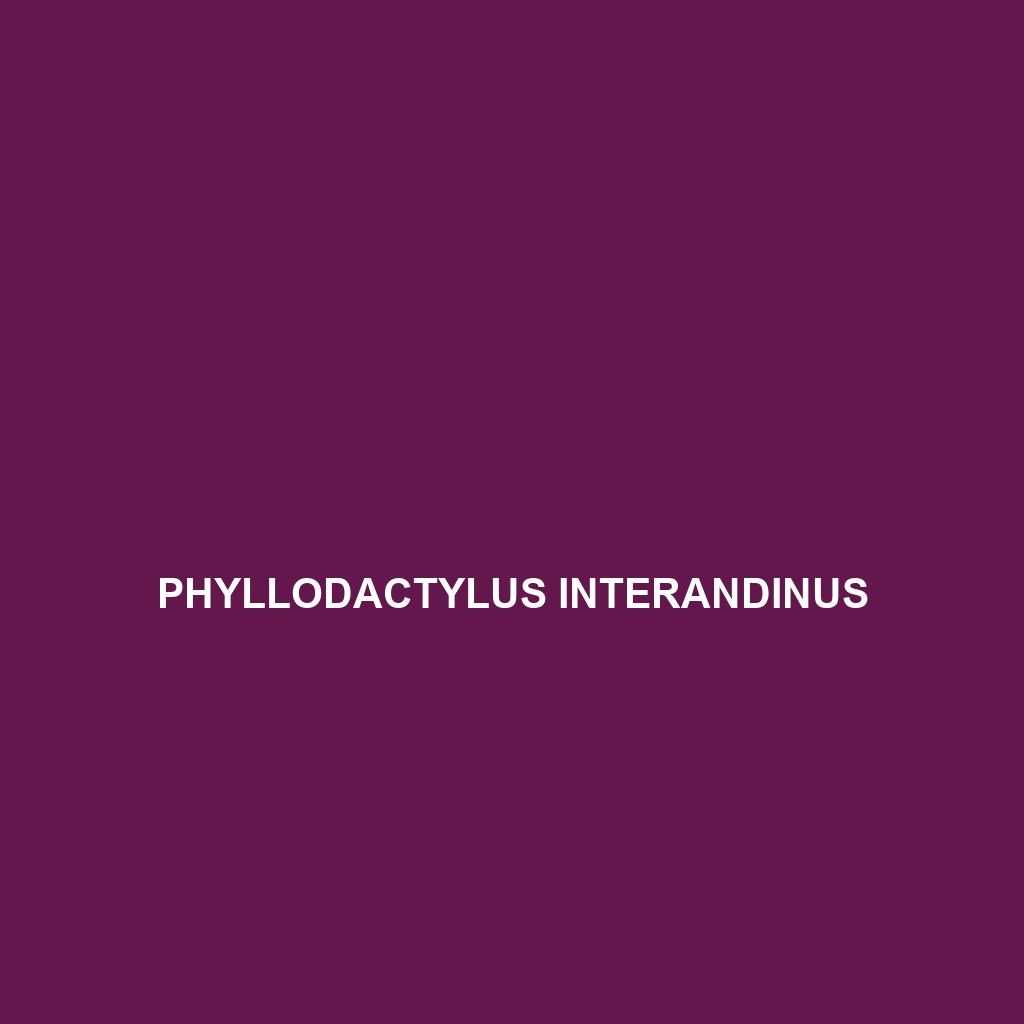Common Name
Phyllodactylus insularis
Scientific Name
Phyllodactylus insularis
Habitat
Phyllodactylus insularis, commonly known as the Caribbean Leaf-toed Gecko, primarily inhabits tropical and subtropical regions. Its range includes the Caribbean islands, particularly those with moderate humidity and warm temperatures. This species thrives in environments such as rainforests and coastal areas, where it can find ample shelter under leaf litter, tree bark, and among rocky crevices. These geckos favor warm temperatures and are often found in areas with microhabitats that provide humidity and cover. They are capable of adapting to both natural forests and cultivated areas, rendering them versatile inhabitants of varying climatic regions.
Physical Characteristics
The Phyllodactylus insularis typically measures between 6 to 8 inches in length, characterized by its flattened body and wide toe pads, which allow for exceptional climbing abilities. Its coloration ranges from a light brown to a more vibrant shade, often with a mottled pattern that aids in camouflage against the forest floor or underbrush. These geckos possess large, expressive eyes with vertical pupils, which enhance their nocturnal vision. A distinctive feature of this species is the toe shape; the flattened toes are adapted for gripping onto smooth surfaces, contributing to their agile movements.
Behavior
This species exhibits predominantly nocturnal behavior, making it active during the night when it hunts for food and interacts socially. Phyllodactylus insularis is often seen basking during twilight hours before it engages in hunting. Social interactions involve territorial displays and mating rituals, which include elaborate courtship behaviors. Males often exhibit displays of body posturing and vocalizations to attract females. Their nocturnal lifestyle allows them to avoid many predators while taking advantage of cooler temperatures for activity.
Diet
Phyllodactylus insularis is primarily insectivorous, feeding on various small insects including crickets, ants, and beetles. Their diet may also include softer-bodied invertebrates due to their small mouth and tooth structure. Although they are predominantly insectivores, they have been observed consuming nectar and fruits, showcasing some omnivorous tendencies. The ability to forage in diverse habitats enables them to adapt their diet based on seasonal availability of resources.
Reproduction
The reproductive cycle of Phyllodactylus insularis involves distinct mating seasons, typically occurring in response to changes in climate and food availability. During the mating season, males perform courtship displays, often involving head bobbing and other visual signals. Females usually lay clutches of 1 to 2 eggs, which they deposit underneath leaf litter or in the crooks of trees to ensure protection. The gestation period lasts approximately 30 to 60 days, after which the hatchlings emerge, already capable of independent survival, thanks to their innate foraging skills.
Conservation Status
Currently, Phyllodactylus insularis is classified as of Least Concern according to the IUCN Red List. However, habitat destruction due to deforestation, urbanization, and climate change poses significant threats to their populations. Conservation efforts are essential to preserve their natural habitats and mitigate the impacts of human activities. Educational programs and local community involvement in conservation practices are critical to promoting awareness and supporting the species’ longevity.
Interesting Facts
One intriguing aspect of Phyllodactylus insularis is its ability to regenerate its tail, a common trait among many lizard species. This adaptive feature enables geckos to escape predators while losing a portion of their tail. Another fascinating fact is their communication; these geckos utilize a range of vocalizations that serve various purposes, including mating calls and warning signals. Their unique adaptations to climb steep surfaces and blend with their environment make them a captivating example of evolutionary success.
Role in Ecosystem
Phyllodactylus insularis plays an essential role in its ecosystem as both predator and prey. By controlling insect populations, they contribute to the balance of the food web. Their presence supports the health of vegetation by reducing pest populations that can otherwise damage plants. As prey, they provide nourishment for larger predators such as birds and snakes, underscoring their importance in maintaining ecological integrity. This keystone species adds value to its habitat, demonstrating the interconnectedness of local ecosystems.
